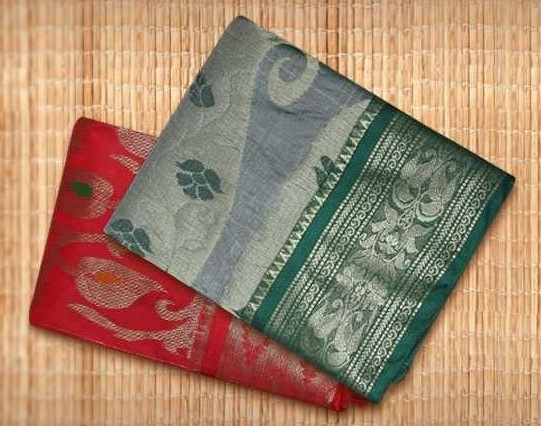If women are gifts, saree is the most beautiful gift wrap. This line beautifully defines the elegance of this six-yard drape on a woman. Sarees stay first among the traditional attires that make a woman look gorgeous.
Saree is an all-time favourite ethnic attire of Indian women. Right from the rural to urban population, women are seen draped in this attire. Impressed by the beauty of this six-yard drape, many women across the globe have added it to their wardrobe.
Sarees are available in hundreds of designs, colours and patterns, much of it as adornment for women during the numerous festivals and occasions celebrated in India. There’s a saree for every occasion! The saree is paired with a choli or blouse and a petticoat which is worn below the saree. As much as the draping styles differ, so does the work on individual pieces. The saree has many variations such as half-saree, lehenga-choli, ghagra-choli, etc.
As sarees are undeniable part of Indian culture, students get to learn about its history, evolution and trends in fashion designing classes. Here are the different types of sarees that India is popularly known for.
The Banarasi Silk Saree
The Banarasi silk saree originates from the city named Varanasi. The mix of vibrant colours, textures and designs is what adds to its richness. The Banarasi saree is woven with golden threads, especially along its drape and border. In a fashion designing institute, the course curriculum covers discussion on different fabrics and their origin. In this way, a student gets to know about the Banarasi fabric and the Banarasi saree.
The Banarasi saree is often worn as a symbol of wealth for weddings and high profile functions.
Chanderi Saree
The Chanderi saree comes from Madhya Pradesh. It is woven using tissue silk which gives the saree a sheer look. Some of the most common patterns woven on the saree are geometric patterns, floral patterns and peacocks. Women who love draping Chanderi saree adorn it with traditional jewellery for weddings, functions and festivals.
Tant Saree
West Bengal is popularly known for Tant sarees. This saree is made from crisp cotton which is commonly known as ‘Tant’. As a result of the starch, the Tant saree lacks the flow and fall of silk and satin.
The saree is woven with crisp cotton threads which makes it perfect for festive occasions such as Kali Puja and Durga Puja.
Sarees have an age-old connection with Indian culture. Students who are interested to know more about such cultural connections and traditional attire can learn more from a fashion designing course. Along with this, one gets to study the history of Indian costumes in detail.
Kanjavaram Saree
Kanjavaram sarees are very popular in Southern India. The Kanjavaram closely resembles the Banarasi saree because of the sheen and vibrant colours used. The speciality of the Kanjavaram saree is the temple patterns which are crafted on the drape and border. These temple patterns are inspired from the temples of Kanchipuram in Tamil Nadu, the place where the patterns originate from.
Joining a fashion designing institute gives one the benefit of learning about different traditional Indian textiles and their intriguing relation with temple arts and other traditional artistry. This knowledge is helpful when students take up careers such as fashion design experts, costume designer, fabric coordinator, etc.
Patola Saree
The Patola saree is one of the most vibrant of all the Indian sarees. Originated from a small town named Patan in Gujarat, the Patola saree is distinguished by its intricate detailing and vivid colours.
The craftsmanship of weaving the Patola saree solely lies in the hands of the Patan weavers. This saree is often picked for traditional functions and family occasions.
These are just a few of the numerous varieties of sarees that are popular in India. Some of the other major varieties are Kalamkari, Gota, Baluchari Silk, Paithani, Kotki, Panchampalli and Pattu sarees.
The subject of fashion designing gives you a flair for exploring new trends and creatively fusing them with traditional attires. But saree is the attire that will never go out of fashion, unlike few other ethnic garments.
As much as women in the past enjoyed draping sarees, women in the modern times enjoy wearing it too. It will be delightful for you to try draping the various types of sarees on occasions and be admired for the look it gives!






